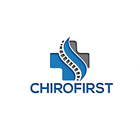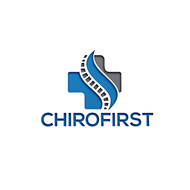Services
What is the Chiropractic Adjustment?
Chiropractic adjustments offer numerous benefits, especially for those suffering from musculoskeletal issues. These adjustments, which involve the precise manipulation of the spine, help to realign vertebrae and relieve pressure on nerves, reducing pain and improving mobility. One of the primary advantages is the alleviation of chronic back and neck pain, often without the need for medication or surgery. Chiropractic care also promotes better posture, enhances joint function, and can improve overall nervous system health. Many people report feeling more relaxed and energized after treatment, as the adjustment helps restore balance to the body.
What is Pregnancy and Pediatric Chiropractic care?
Chiropractic care can play a supportive role during pregnancy and childhood by promoting proper spinal alignment, nervous system function, and overall wellness. For pregnant women, chiropractic adjustments may help relieve common discomforts such as back pain, pelvic imbalance, and sciatica, while also supporting optimal fetal positioning. In pediatrics, gentle chiropractic care can aid in addressing issues like colic, nursing difficulties, and posture development. With a focus on safe, non-invasive techniques, chiropractors work to enhance the body’s natural ability to function and heal during these critical stages of growth and change.
What is Personal Training?
Personal training is a professional service that helps individuals improve their health, fitness, and overall well-being through structured and personalized exercise programs. A personal trainer assesses each client’s fitness level, listens to their goals, and develops customized workout plans tailored to their needs. They also provide motivation, correct technique to prevent injury, and hold clients accountable for progress. Personal trainers work with a wide range of clients, from beginners looking to lose weight to athletes aiming to enhance performance, as well as individuals recovering from injury or managing chronic conditions.
What is Shockwave?
Shockwave therapy is a non-invasive treatment that offers numerous benefits, particularly for musculoskeletal conditions. It works by delivering acoustic waves to targeted areas, promoting enhanced circulation, reducing inflammation, and stimulating the body's natural healing processes. Patients often experience significant pain relief and improved mobility following treatment, making it an effective option for conditions such as tendinitis, plantar fasciitis, and calcific shoulder. Additionally, shockwave therapy can accelerate recovery times and reduce the need for more invasive interventions, such as surgery. With minimal side effects and a quick recovery, it has become a popular choice for those seeking alternative pain management solutions.
What is Dry Needling?
Dry needling is a therapeutic technique that involves inserting thin needles into specific muscle trigger points to relieve pain and improve function. One of the primary benefits of dry needling is its ability to alleviate muscle tension and reduce discomfort associated with chronic pain conditions, headaches, neck pain and low back pain. By targeting tight muscle bands, the treatment can promote relaxation and enhance blood flow, which aids in healing and recovery. Additionally, patients often experience improved range of motion and increased muscle flexibility, making it a valuable adjunct to chiropractic care. With minimal side effects and a generally quick recovery time, dry needling is an effective option for individuals seeking relief from musculoskeletal pain.
What is Compression Therapy?
Compression therapy has become increasingly popular among athletes for its numerous benefits in enhancing recovery. By applying graduated pressure to the muscles, it improves blood circulation and helps reduce muscle soreness and swelling after intense workouts or competitions. This enhanced circulation accelerates the removal of metabolic waste products, such as lactic acid, which can contribute to fatigue and discomfort. Additionally, compression garments can provide support to muscles and joints, reducing the risk of injury during physical activity. Athletes often report improved recovery times, allowing for quicker return to training and competition, as well as increased overall performance. Overall, compression therapy serves as an effective tool in an athlete's recovery regimen, promoting optimal physical condition and endurance.
What is Massage Therapy?
Massage therapy is a hands-on treatment that involves manipulating the soft tissues of the body, including muscles, tendons, and ligaments, to promote relaxation, reduce pain, and improve overall well-being. It encompasses a variety of techniques, such as Swedish massage, deep tissue massage, and trigger point therapy, each aimed at addressing specific physical issues or health concerns. By applying pressure, friction, and kneading motions, massage therapists work to increase blood flow, release muscle tension, and alleviate stress. Regular massage therapy can be beneficial for managing chronic pain, improving flexibility, enhancing circulation, and supporting mental health by reducing anxiety and promoting relaxation.
What is Cupping?
Cupping therapy offers several potential benefits, particularly in promoting circulation and relieving muscle tension. By creating suction on the skin, cupping increases blood flow to the affected areas, which can aid in muscle recovery and reduce inflammation. This enhanced circulation helps remove toxins and metabolic waste from the tissues, promoting faster healing. Cupping is also known for its ability to alleviate pain, particularly in conditions such as back pain, neck tension, and even migraines. Additionally, many people find cupping to be deeply relaxing, which can help reduce stress and improve overall well-being. When used in conjunction with other therapies, it can contribute to better flexibility, range of motion, and a sense of revitalization.
What is Muscle Scraping?
Muscle scraping, also known as instrument-assisted soft tissue mobilization (IASTM), offers several benefits for muscle recovery and overall performance enhancement. This technique involves using specially designed tools to apply controlled pressure and friction to the muscles and fascia, promoting increased blood flow and reducing tension in the soft tissues. By breaking down scar tissue and adhesions, muscle scraping can enhance flexibility and range of motion, making it particularly effective for athletes recovering from injuries or overuse. Additionally, the stimulation of the underlying tissues aids in the body’s natural healing process, alleviating pain and discomfort. Many individuals also experience improved muscle recovery and reduced soreness, allowing them to train more effectively and maintain peak physical condition. Overall, muscle scraping is a valuable therapeutic practice that supports both injury prevention and recovery.
What is Myofascial Release?
Myofascial release is a therapeutic technique that targets the fascia, the connective tissue surrounding muscles, with the aim of relieving tension and pain. One of the key benefits of myofascial release is its ability to reduce chronic pain caused by muscle tightness or restricted movement. By applying gentle, sustained pressure to areas of restriction, this therapy improves blood circulation, enhances flexibility, and promotes faster recovery from injuries. It also helps release knots or adhesions in the fascia, which can lead to improved posture and better overall body alignment. Myofascial release is particularly beneficial for individuals suffering from conditions like fibromyalgia, headaches, or sports-related injuries, as it reduces stiffness and improves range of motion, contributing to an overall sense of physical relief and relaxation.
What is Kinesiology Taping?
Kinesiology taping offers a range of benefits, especially for athletes and individuals recovering from injuries. This technique involves applying flexible, adhesive tape to the skin, which supports muscles and joints without restricting movement. One of the key advantages is its ability to reduce pain and inflammation by lifting the skin, improving blood flow and lymphatic drainage. Kinesiology tape also provides stability to injured or overworked muscles, allowing them to heal more effectively while still maintaining a full range of motion. Additionally, it can improve posture, enhance athletic performance by reducing muscle fatigue, and help prevent re-injury by offering subtle support to vulnerable areas. The tape's versatility makes it a popular tool for injury prevention, rehabilitation, and overall physical well-being.

